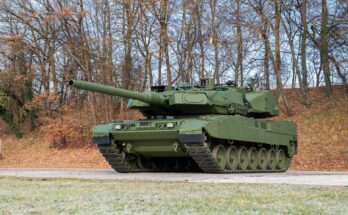by Bill Ostrove, International Military Markets Analyst, Forecast International.
The greatest threat to most Latin American governments is internal. Even though transitioning to a democracy and using effective counterinsurgency strategies have successfully defeated – or at least defused – several insurgencies, the risk of guerrilla activity remains. This is especially true in Colombia and, to a lesser extent, Peru. In Mexico and Central America, violent gangs have forced a military response.
Colombia’s decades-long insurgency problem showed signs of spinning out of control in the mid- to late 1990s as the FARC rebel group scored major victories against the military. In response, the government began the process of expanding the force structure, better equipping the troops, and professionalizing the Army instead of relying so heavily on conscripts. This buildup has paid off with a peace deal announced in August 2016. However, the country still has a long way to go before peace is at hand. Colombia must deal with other guerilla groups, such as the ELN, who have stepped into FARC’s place.
Peru, for the most part, has successfully dealt with threats from the Sendero Luminoso and Tupac Amaru groups, although Sendero Luminoso continues to carry out small-scale government attacks.
At the same time, Central America is experiencing a period of internal instability stemming from a marked rise in criminal gang violence. Many former soldiers and guerrillas of the civil wars in the 1980s have turned to a life of crime, and the region is awash in cheap automatic weapons leftover from those conflicts. The high incidence of crime has forced the governments to place military forces in the role of police on a now, regularly occurring basis.
Drug trafficking poses an internal threat to a number of Latin American countries – particularly Mexico, Colombia, Bolivia, and Peru. And, as counter-drug operations have forced traffickers to seek more-conducive surroundings, it is spreading into Argentina, Ecuador, and Brazil.
Starting in 2006, violence between drug cartels in Mexico began to escalate, and more and more innocent civilians were caught in the crossfire. Mexico’s government responded by sharply increasing spending on police and the military and prosecuting members of cartels and gangs.
Latin America faces few outside threats today, and its regional powers remain at peace. There is, therefore, little need to purchase military equipment for national defense. Rather, the escalating violence of internal gangs and guerilla groups – beyond what police can handle – will be the primary driver of Latin American military operations and spending over the next five years.
Please feel free to use this content with Forecast International and analyst attributions, along with a link to the article. Contact Ray Peterson at +1 (203) 426-0800 or via email at ray.peterson@forecast1.com for additional analysis.
The Forecast International International Military Markets series examines the military capabilities, equipment requirements, and force structures inventories of 140 countries, with corresponding coverage of the political and economic trends shaping the defense market outlook for individual countries and regions.
For 50 years, Forecast International intelligence reports have been the aerospace and defense industry standard for accurate research, analysis, and projections. Our experienced analysts compile, evaluate, and present accurate data for decision makers. FI's market research reports offer concise analysis of individual programs and identify market opportunities. Each report includes a program overview, detailed statistics, recent developments and a competitive analysis, culminating in production forecasts spanning 10 or 15 years. Let our market intelligence reports be a key part of reducing uncertainties and mastering your specific market and its growth potential. Find out more at www.forecastinternational.com



